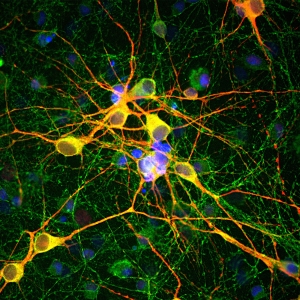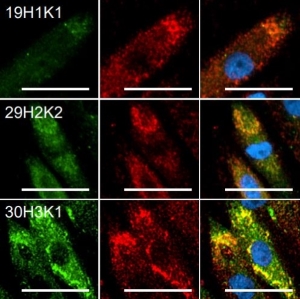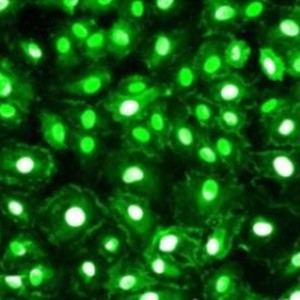Product Details
Product Sizes
| Size | List Price | Price | Cart |
|---|---|---|---|
| 100 ul | $325.00 | Add to Cart |
mCherry is derived from proteins originally isolated from Cnidarians (jelly fish, sea anemones and corals), and is used as a fluorescent tracer in transfection and transgenic experiments. The prototype for these fluorescent proteins is Green Fluorescent Protein (GFP), which is a ~27kDa protein isolated originally from the jellyfish Aequoria victoria. The mCherry protein is derived from DsRed, a red fluorescent protein related to GFP isolated from so-called disc corals of the genusDiscosoma. DsRed is similar in size and properties to GFP, but, obviously, produces a red rather than a green fluorochrome. Several further cycles of mutation, directed modification and evolutionary selection produced mCherry, which has an excitation maximum at 587 nm and and emission maximum at 610 nm (4). We expressed the mCherry protein sequence shown in reference 4 in bacteria, purified out the mCherry and raised this rabbit polyclonal antibody. This was affinity purified and was found to stain a band of the expected size in HEK293 cells transfected with the pFin-EF1-mCherry vector designed to express mCherry. As shown below, the antibody does not stain any protein band in untransfected HEK293 cells. |
Images
HeK293 cells transfected in the same way and viewed in the confocal microscope. Most Hek293 cells are not transfected so only the nucleus of these cells can be visualized with a blue DNA stain. Cells which are transfected with Cherry are bright red. Staining with CH22115 is shown in Green. Green antibody staining is only seen cells which express Cherry, as expected, and the superimposition of the green and red results in an orange signal.
Blot of HEK293 cells transfected with pFin-EF1-mCherry vector, courtesy of the Semple-Rowland lab at the University of Florida. There is a strong clean band at about 30 kDa. HEK293 cells which were not transfected with this vector show no protein bands.






